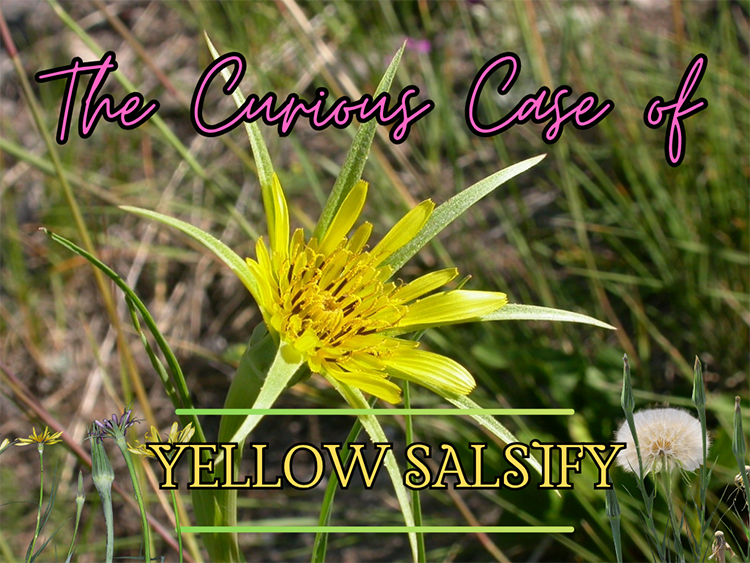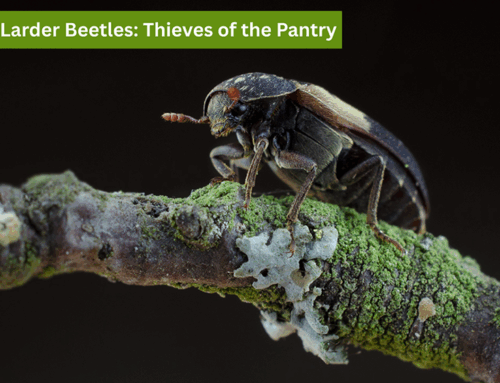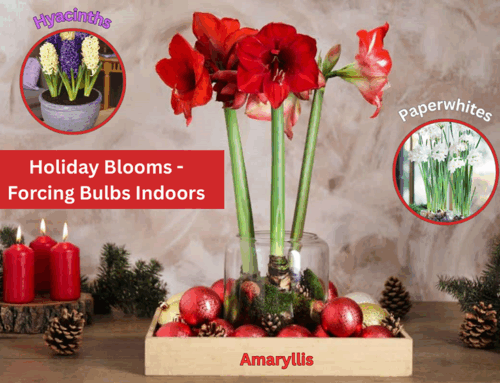The Curious Case of Yellow Salsify
by Brett Kerley
If you’ve walked through an empty lot or along a weedy roadside in Edmonton and spotted a huge, fluffy seed head that looks like a dandelion on steroids, you’ve likely encountered Tragopogon dubius. Commonly known as yellow salsify, western salsify, goat’s beard, or wild oysterplant, this Eurasian native has become a familiar part of Alberta’s landscapes.
Though often overlooked or mistaken for a weed, this plant has a curious biology, and eye-catching features. It has a surprisingly wide range across North America.
Origins and Spread
Tragopogon dubius was introduced to North America in the early 1900s, likely as part of a forage plant trial or accidentally with other seed imports. It found the disturbed soils of western Canada ideal, and quickly naturalized. Today, it’s widespread across Alberta, particularly in the Edmonton area. It thrives along roadsides, in vacant lots, railways, and disturbed ground.
Its spread is aided by its efficient wind-dispersed seeds and its tolerance for poor, dry soils. It’s not considered a noxious weed in Alberta, but it is a common and persistent naturalized species.
Identification
Yellow salsify is often mistaken for a large dandelion, but once you know what to look for, it’s easy to spot:
- Flowers: Bright yellow and daisy-like, up to 2 inches (5 cm). They open in the morning and close by mid-afternoon—one reason it’s sometimes called “morning flower.”
- Seed heads: Dramatic puffballs that can reach up to 4 inches (10 cm) in diameter—much larger than a dandelion’s. These globe-shaped seed heads are often the most noticeable part of the plant.
- Leaves: Long, narrow, grey-green, and grass-like. They can grow over 12 inches (30 cm) long and clasp the stem.
- Stems: Erect, hairless, and hollow, reaching up to 3 feet (90 cm) tall, sometimes with branches near the top.
It is a biennial, growing a leafy rosette in the first year, then flowering and dying in the second year.
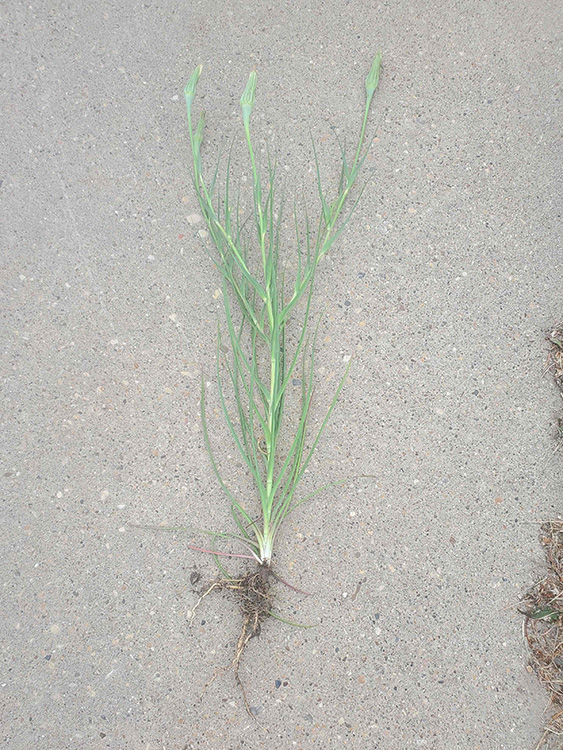
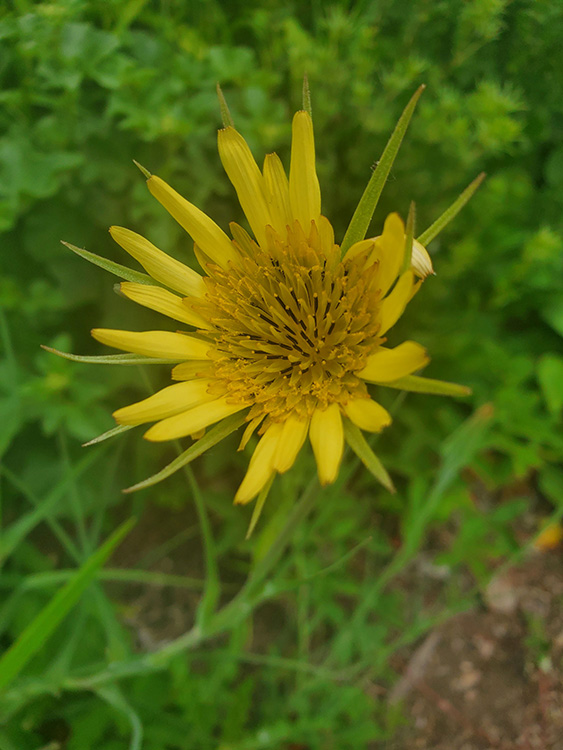
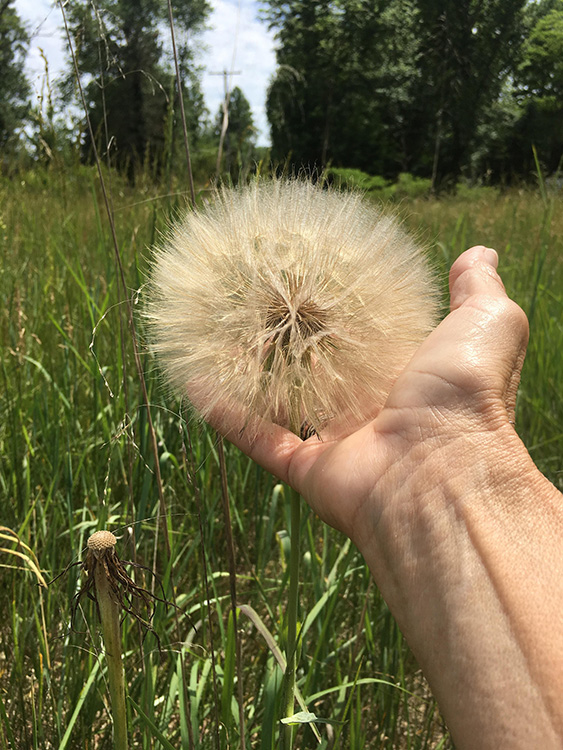
Ecological Role
While Tragopogon dubius isn’t as aggressive as some invasive species, it readily colonizes disturbed ground and can compete with native plants in overgrazed or unmanaged areas. In Edmonton, it’s most often found in marginal spaces rather than well-kept gardens or native ecosystems.
Pollinator Value: The flowers attract bees and other insects, especially in early summer when bloom options are limited in dry areas.
It also plays a minor role in soil stabilization, although it’s usually a symptom of soil disturbance rather than a remedy.
What To Do If It Shows Up In Your Garden
Most gardeners will consider Tragopogon dubius an attractive curiosity or a mild nuisance.
Pros
- Eye-catching seed heads make great subjects for nature photography or seed education.
- Easy to pull if unwanted. Shallow taproots make manual removal simple in moist soil.
- Slight pollinator value.
Cons
- Self-seeds aggressively—one plant can release hundreds of seeds.
- Short-lived and not particularly ornamental outside its seed head stage.
- May reappear annually if not managed.
If you like the novelty but don’t want it spreading, deadhead the plant before seeds mature. If you’re unsure whether to keep it, consider letting one plant grow and removing any others that pop up.
Edibility and Historical Use
Tragopogon dubius is sometimes called wild oysterplant or vegetable oyster due to the faint oyster-like flavour of its taproot. Historically, the plant was foraged in Europe and by some early settlers in North America. The root is best eaten when young, before it becomes woody, typically in its first year of growth.
- Root: Edible when young; can be roasted or sautéed.
- Shoots & buds: Young flower buds and stems can be steamed or eaten raw.
⚠️ Always harvest wild plants responsibly and away from roadsides or polluted areas. Urban foraging should be done with caution, and many city-grown specimens are best admired rather than consumed.
Did You Know?
- The name Tragopogon means “goat’s beard” in Greek (tragos = goat, pogon = beard), referring to the plant’s fluffy seed heads.
- Edmonton has several salsify species, including the purple-flowered Tragopogon porrifolius, which is sometimes cultivated in gardens for its edible root.
- Yellow salsify often hybridizes with meadow salsify ( pratensis), producing variable flower colors and seed head sizes.
A Curiosity Worth Watching
Tragopogon dubius may not belong in your flower beds, but its presence around Edmonton is a fascinating example of how introduced plants find niches in urban ecosystems. With its outsized seed heads and habit of opening with the sun, it has a subtle charm that deserves at least a moment’s appreciation.
So, whether you admire its oversized fluff, marvel at its morning-only blooms, or grumble about its garden cameos, Tragopogon dubius is here to stay, at least along our sunny sidewalks and scruffy boulevards. It’s a plant with personality, persistence, and just enough puff to make you look twice.
Until next time, keep your eyes peeled, your seeds contained, and your goats beardless.
Stay curious, Edmonton—and may your gardens be fluff-free (unless you like it that way)!

